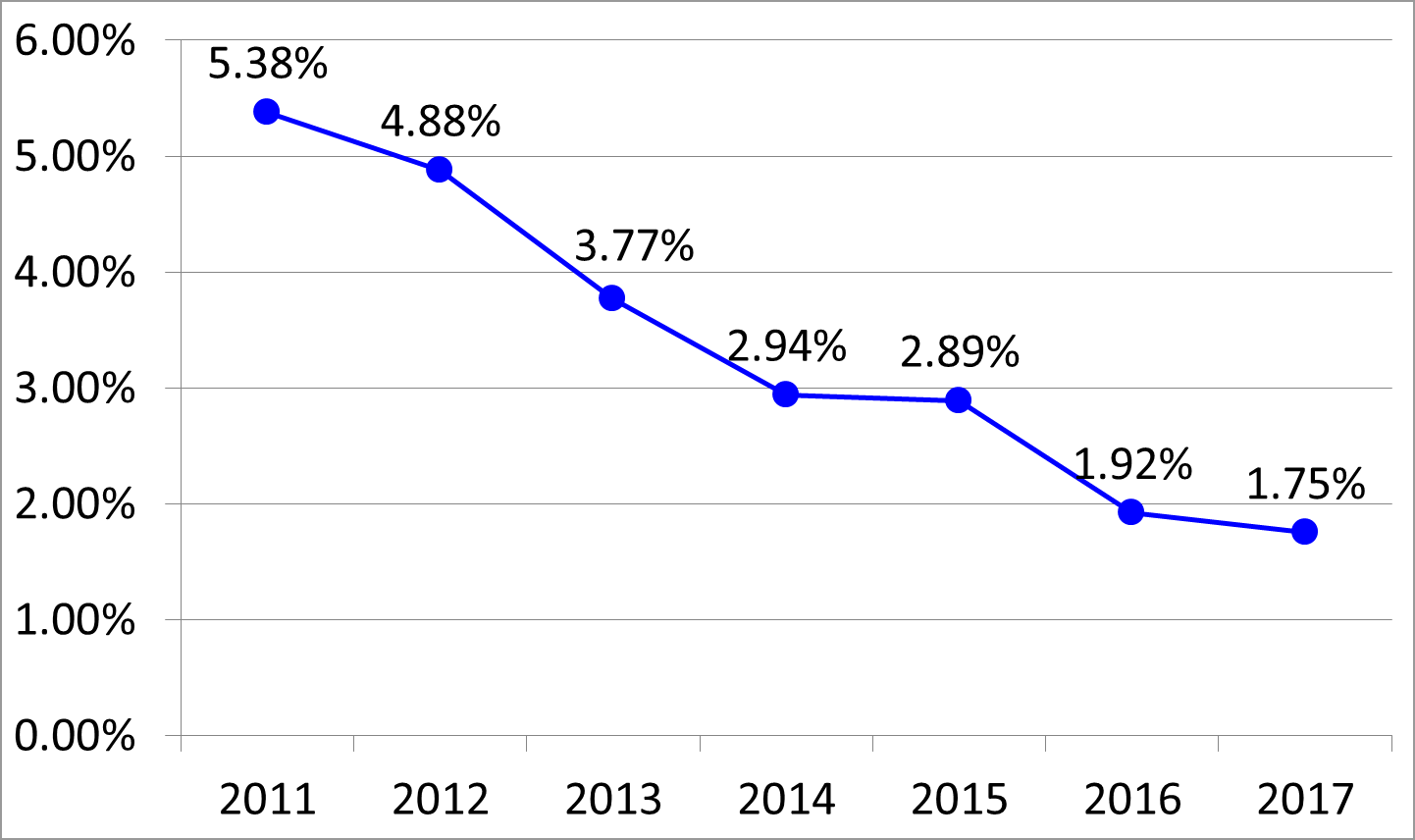Column Finance and the Social Security System 2019.01.25
【Aging, safety net and fiscal crisis in Japan】No.149: Operating margin of social medical corporations has been declining
In Japan, the fee that medical institutions receive from public medical insurance is revised every two years. As mentioned in Column No. 16, the average operating margin of social medical corporations is an effective index to judge the adequacy of the overall medical fee remuneration level. The core medical fee, which is a reimbursement for medical services excluding drug prices, increased 1.38%, 0.1%, and 0.49% in 2012, 2014, and 2016, respectively. However, as shown in Figure 1, the average operating margin of social medical corporations has been declining.
There are two reasons. First, personnel expenses, which account for more than half of medical expenses, surpass the increases of the core medical fee. Second, the mismatch between the medical service delivery system and the medical needs of local residents is growing in the face of a rapidly declining population. As shown in Figure 2, there is a large gap among the operating margins of social medical corporations in Fiscal Year 2017. Medical institutions suffering from the deficit have failed to act in anticipation of the structural change in the regional healthcare market.

Source: Financial statements of social medical corporations
Figure 2: Distribution of financial performance of social medical corporations
--- 2017 ---

Source: Financial statements of social medical corporations
